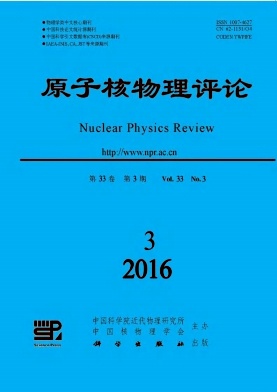|
[1]
|
THOENNESSEN M.Rep Prog Phys,2004,67:1187. |
|
[2]
|
THOENNESSEN M.Rep Prog Phys,2013,76:056301. |
|
[3]
|
HOFMANN S,MÜNZENBERG G.Rev Mod Phys,2000, 72(3):733. |
|
[4]
|
ROTHER W,DEWALD A,IWASAKI H,et al.Phys Rev Lett,2011,106:022502. |
|
[5]
|
CRAWFORD H L,CLARK R M,FALLON P,et al.Phys Rev Lett,2013,110:242701. |
|
[6]
|
SANTAMARIA C,LOUCHART C,OBERTELLI,et al.Phys Rev Lett,2015,115:192501. |
|
[7]
|
DEACON A N,FREEMAN S J,JANSSENS R V F,et al.Phys Rev C,2007,76:054303. |
|
[8]
|
STEPPENBECK D,DEACON A N,FREEMAN S J,et al.Phys Rev C,2010,81:014305. |
|
[9]
|
LJUNGVALL J,GöRGEN A,OBERTELLI A,et al.Phys Rev C,2010,81:061301(R). |
|
[10]
|
STEPPENBECK D,JANSSENS R V F,FREEMAN S J,et al.Phys Rev C,2012,85:044316. |
|
[11]
|
RECCHIA F,LENZI S M,LUNARDI S,et al.Phys Rev C,2012,85:064305. |
|
[12]
|
LIDDICK S N,SUCHYTA S,ABROMEIT B,et al.Phys Rev C,2011,84:061305(R). |
|
[13]
|
LENZI S M,NOWACKI F,POVES A,et al.Phys Rev C,2010,82:054301. |
|
[14]
|
CORAGGIO L,COVELLO A,GARGANO A,et al.Phys Rev C,2014,89:024319. |
|
[15]
|
TOGASHI T,SHIMIZU N,UTSUNO Y,et al.Phys Rev C,2015,91:024320. |
|
[16]
|
HONMA M,OTSUKA T,BROWN B A,et al.Phys Rev C,2002,65:061301(R). |
|
[17]
|
KANEKO K,SUN Y,HASEGAWA M,et al.Phys Rev C,2008,78:064312. |
|
[18]
|
JIN H,SUN Y,KANEKO K,et al.Phys Rev C,2013,87:044327. |
|
[19]
|
HARA K,SUN Y.Int J Mod Phys E,1995,4(4):637. |
|
[20]
|
SUN Y,YANG Y C,LIU H L,et al.Phys Rev C,2009,80:054306. |
|
[21]
|
YANG Y C,SUN Y,KANEKO K,et al.Phys Rev C,2010,82:031304(R). |
|
[22]
|
YANG Y C,JIN H,SUN Y,et al.Phys Lett B,2011,700:44. |
|
[23]
|
SUN Y,YANG Y C,JIN H,et al.Phys Rev C,2012,85:054307. |
|
[24]
|
WANG Hankui,JIN Hua,SUN Yang,et al.Nuclear Physics Review,2016,33(2):242.(in Chinese)(王韩奎,金华,孙扬,等.原子核物理评论,2016,33(2):242.) |
|
[25]
|
CAURIER E,MARTÍEZ-PINEDO G,NOWACKI F,et al.Rev Mod Phys,2005,77(2):427. |
|
[26]
|
http://www.garsington.eclipse.co.uk/ |
|
[27]
|
KANEKO K,MIZUSAKI T,SUN Y,et al.Phys Lett B,2009,679:214. |
|
[28]
|
HARA K,SUN Y.Nucl Phys A,1991,531:221. |
|
[29]
|
KANEKO K,MIZUSAKI T,SUN Y,et al.Phys Rev C,2014,89:011302(R). |
|
[30]
|
KANEKO K,MIZUSAKI T,SUN Y,et al.Phys Rev C,2015,92:044331. |
|
[31]
|
WANG L J,CHEN F Q,MIZUSAKI T,et al.Phys Rev C,2014,90:011303(R). |






 甘公网安备 62010202000723号
甘公网安备 62010202000723号 DownLoad:
DownLoad: